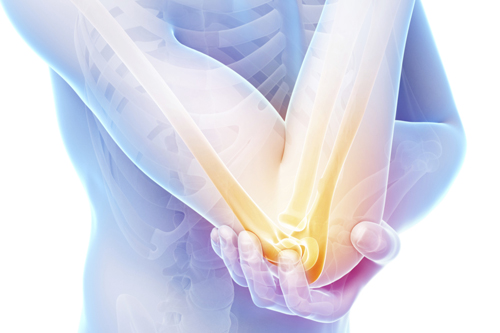
Even if you do not play a racquet sport, you might have lateral epicondylitis, or “ tennis elbow .” This is the common term for the painful irritation or degeneration of the tendons that connect the elbow muscle, known as the extensor carpi radialis brevis (ECRB), to the bony bump on the outer part of the elbow (the epicondyle).
Tennis elbow is caused by chronic overuse, whether it is from recreational activities like hitting ground strokes or from occupations that require raking leaves, painting walls, weaving or cutting meat. Most often, it occurs in the elbow of your dominant side.
The ECRB is used when you extend or lift your wrist or hand, so tennis elbow can make its presence felt when you lift anything, heavy or light. Once tennis elbow is definitively diagnosed, treatment can begin. First, to relieve pain, you can apply ice; take acetaminophen or a nonsteroidal anti-inflammatory drug (if ordered by your physician); avoid, as much as possible, activities that cause flare-ups; and use orthotics, such as a counterforce brace or a wrist splint, to reduce strain on the affected muscles and tendons.
When the pain is better controlled, we can reduce the chance that the symptoms will return. Physical therapy strategies include
- evaluating your activities and modifying repetitive motions, if necessary;
- gradually strengthening your forearm and wrist muscles, often including an emphasis on lowering weights (negative actions);
- stretching and range-of-motion exercises; and
- wearing a device to keep your wrist straight during lifting or tennis strokes, to encourage the use of the stronger upper arm muscles instead of the smaller forearm muscles.
We can help you properly execute an exercise program to achieve maximum satisfaction while minimizing discomfort.
















